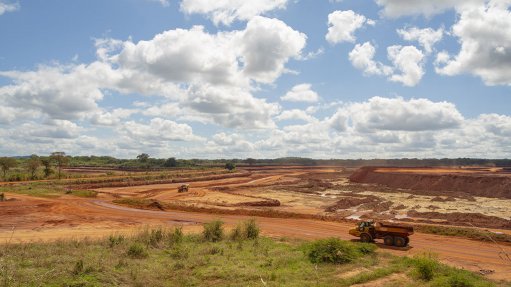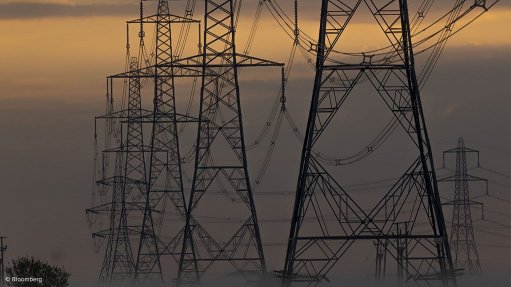Mining in the Extreme: Why USA/Canadian skills at a premium for cold weather mining
This article has been supplied as a media statement and is not written by Creamer Media. It may be available only for a limited time on this website.
Despite the plunge in commodity prices, some of the countries that continue to prosper within the mining sector, such as Mongolia and Kazakhstan, are also those where every day temperatures can drop to minus 45 C, which gives rise to a whole new set of challenges for the Mining sector. With global warming a significant factor in opening up opportunities for exploring new mineral rich sites in extremely cold regions such as the Arctic, the Mining industry is keen to unlock what they hope will be incredibly rich sources of diamonds, gold, nickel and other metals. However the set up costs before any mining can actually take place are so prohibitive that so far, it has proved a quest for only a very few determined companies, who are taking a very long term view on their investment in these extreme weather regions.
Lucy Donald, who is Director of the Mining division for WRS, a leading recruiter for the global Mining sector, comments, “We are seeing a growing proportion of new projects in highly challenging conditions where temperatures go below -50 C. If today’s miners are to keep up with the still-growing demand for their products, they must become more efficient and effective in the face of these extreme environments and these skills will be at a premium. We are seeing only a few operators and suppliers taking up the challenge, and their experience has pushed back the frontiers of Mining in severe weather regions.”
Data supplied by The Raw Materials Group, which specialises in global analysis of the mining industry , states that more than 200 Arctic mining projects that have been announced in recent years now lie either abandoned or in an early planning stage, with only six mines now operating in North America's vast Arctic region. Lucy explains, “Despite the wealth of resources that can be mined, many of the world’s largest mining organisations are putting off projects in this extreme region as worldwide metal prices have weakened. The nature of the mining industry is such that it requires high upfront investment, contains a notable level of risk and a relatively long period of time to market from the exploration phase and these are exacerbated in regions of the world with extreme weather conditions.”
There are companies who have bucked this trend though and one such company is Baffinland Iron Mines of Toronto. Baffin Island is the largest in Canada and one of the harshest and most unforgiving places on earth when it comes to weather conditions. It’s a place where trees can’t grow, winter temperatures average minus 30 degrees Celsius and from November to January the island experiences nearly 24 hours of darkness with less than two hours of twilight. But despite this hostile climate, Baffinland has persevered since 2005 in working on its Mary River Iron Ore Project in the northwest part of the island, the first large open-pit mine planned within North America at this latitude. After undergoing an extensive environmental impact assessment lasting for five years, construction activities are now well underway in anticipation of the first ore production in 2015.
“The climate conditions play an important role in the planning and execution of any Mining project. The conditions typical of Arctic environments require a great deal of consideration in the planning and logistics relative to almost everything that goes on at the site, but especially from a safety perspective for the people who work there”, says Lucy.
Recent media coverage used The Meadowbank Gold Mine in Nunavut as a good example of this, where their workers have to contend with 75 mile an hour winds, white-out blizzards that can halt mining for days and winter temperatures so cold they can and do crack the steel on excavators.
Companies that have chosen to invest in mining in the Arctic have had to rethink many practices to allow for the extreme conditions, with Meadowbank even stockpiling rock so the mills still have materials to work on when a blizzard halts mining. Heating is also a significant consideration as it requires so much more fuel usage than mining in warmer climates. The Meadowbank mine uses exhaust from the massive electricity generators to help heat the site, after all they have to consider the environment, however harshly it may treat them!
Lucy comments, “Due to the development of mining projects like these within North America, mining operations in other cold locations around the world are now targeting Canadians and Americans for their expat senior roles, primarily for their valuable experience in mining within freezing conditions.”
The rewards reaped have so far been significant for those few companies that have taken up the gauntlet – but so have the challenges, and these begin before workers even arrive at a new mine. Lucy elaborates, “At a project above the Arctic Circle in Hope Bay, Nunavut, the only way of getting equipment to the site was by sea lift at a port only clear of ice for six weeks a year. And with this small window you need to have everything delivered that you are going to need, as anything not delivered by sea would need to be flown in via cargo plane at great expense - air freight deliveries to the site cost 10 to 12 times the amount of sea freight!”
The remoteness of sites and the lack of infrastructure add even greater complexity to cold, high-latitude projects. Roads often need to be built on top of permafrost – frozen soil that may become dangerously unstable if it is allowed to thaw. To mitigate these risks, roads need to be built by layering material on top of the soil, rather than cutting into the permafrost, providing a protective layer and minimizing the risk of failures in the road embankment.
The cold also increases the potential for mine explosions, with statistics showing that coal-mine explosions occur most often during the colder months, October through March. Low barometric pressure and low humidity, combined with the seasonal drying of many areas in underground coal mines, have been key factors in past mine explosions.
As a seasoned recruiter for the Mining sector, Lucy sees an added challenge of sourcing skills for those mining companies that do wish to take up the challenge to develop sites within Arctic regions. “Due to the remoteness of mines in northern Canada, there is a shortage of skilled local workers so The Government of Canada has committed to helping Northerners derive maximum benefit from the abundant natural resources in their territories. In August 2013 the Canadian Prime Minister announced $5.6 million support over four years, through the Canadian Northern Economic Development Agency, for the construction of Yukon College’s Centre for Northern Innovation in Mining (CNIM), which will help locals acquire the skills they need to fill jobs in the growing regional mining industry.”
Completed and operational by 2017, the CNIM will be a one-stop state-of-the-art education and training facility for those looking to begin a career in the mining industry, as well as for those who want to upgrade their skills. In addition, the Centre will offer a mobile trades school that will make training more accessible by delivering courses in smaller communities across the territory and at operating mine sites in Yukon. The mobile trades school is expected to be operational this year.
The Yukon College is at the forefront of northern innovation and knowledge in mining with its internationally recognized Yukon Research Centre, a leader in permafrost research and cold climate innovation. The CNIM will also facilitate applied research and development projects to address northern specific challenges and opportunities within the mining industry.
Lucy summarises the current situation for mining in the extreme, “What has really changed in the last few decades is the knowledge and experience of the mining industry in terms of unlocking remote sites in these extremely hostile environments. Because of their challenging geographical locations, mine development has required early and extensive planning and coordination between equipment operators, surveyors, mine planners and geologists with the aim of bringing projects to development safely, responsibly and on budget, despite the extreme conditions and longer set up times.”
Comments
Press Office
Announcements
What's On
Subscribe to improve your user experience...
Option 1 (equivalent of R125 a month):
Receive a weekly copy of Creamer Media's Engineering News & Mining Weekly magazine
(print copy for those in South Africa and e-magazine for those outside of South Africa)
Receive daily email newsletters
Access to full search results
Access archive of magazine back copies
Access to Projects in Progress
Access to ONE Research Report of your choice in PDF format
Option 2 (equivalent of R375 a month):
All benefits from Option 1
PLUS
Access to Creamer Media's Research Channel Africa for ALL Research Reports, in PDF format, on various industrial and mining sectors
including Electricity; Water; Energy Transition; Hydrogen; Roads, Rail and Ports; Coal; Gold; Platinum; Battery Metals; etc.
Already a subscriber?
Forgotten your password?
Receive weekly copy of Creamer Media's Engineering News & Mining Weekly magazine (print copy for those in South Africa and e-magazine for those outside of South Africa)
➕
Recieve daily email newsletters
➕
Access to full search results
➕
Access archive of magazine back copies
➕
Access to Projects in Progress
➕
Access to ONE Research Report of your choice in PDF format
RESEARCH CHANNEL AFRICA
R4500 (equivalent of R375 a month)
SUBSCRIBEAll benefits from Option 1
➕
Access to Creamer Media's Research Channel Africa for ALL Research Reports on various industrial and mining sectors, in PDF format, including on:
Electricity
➕
Water
➕
Energy Transition
➕
Hydrogen
➕
Roads, Rail and Ports
➕
Coal
➕
Gold
➕
Platinum
➕
Battery Metals
➕
etc.
Receive all benefits from Option 1 or Option 2 delivered to numerous people at your company
➕
Multiple User names and Passwords for simultaneous log-ins
➕
Intranet integration access to all in your organisation


















